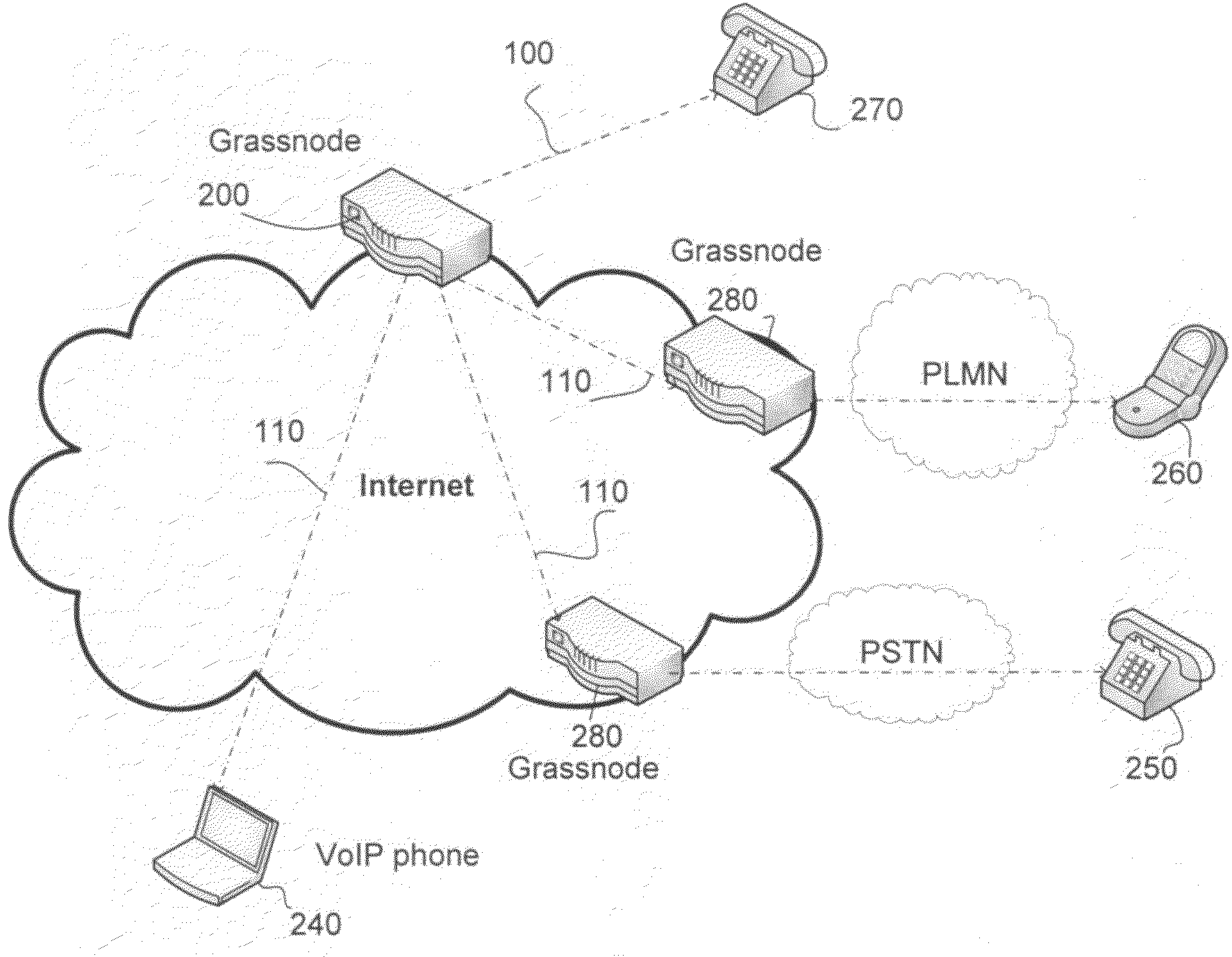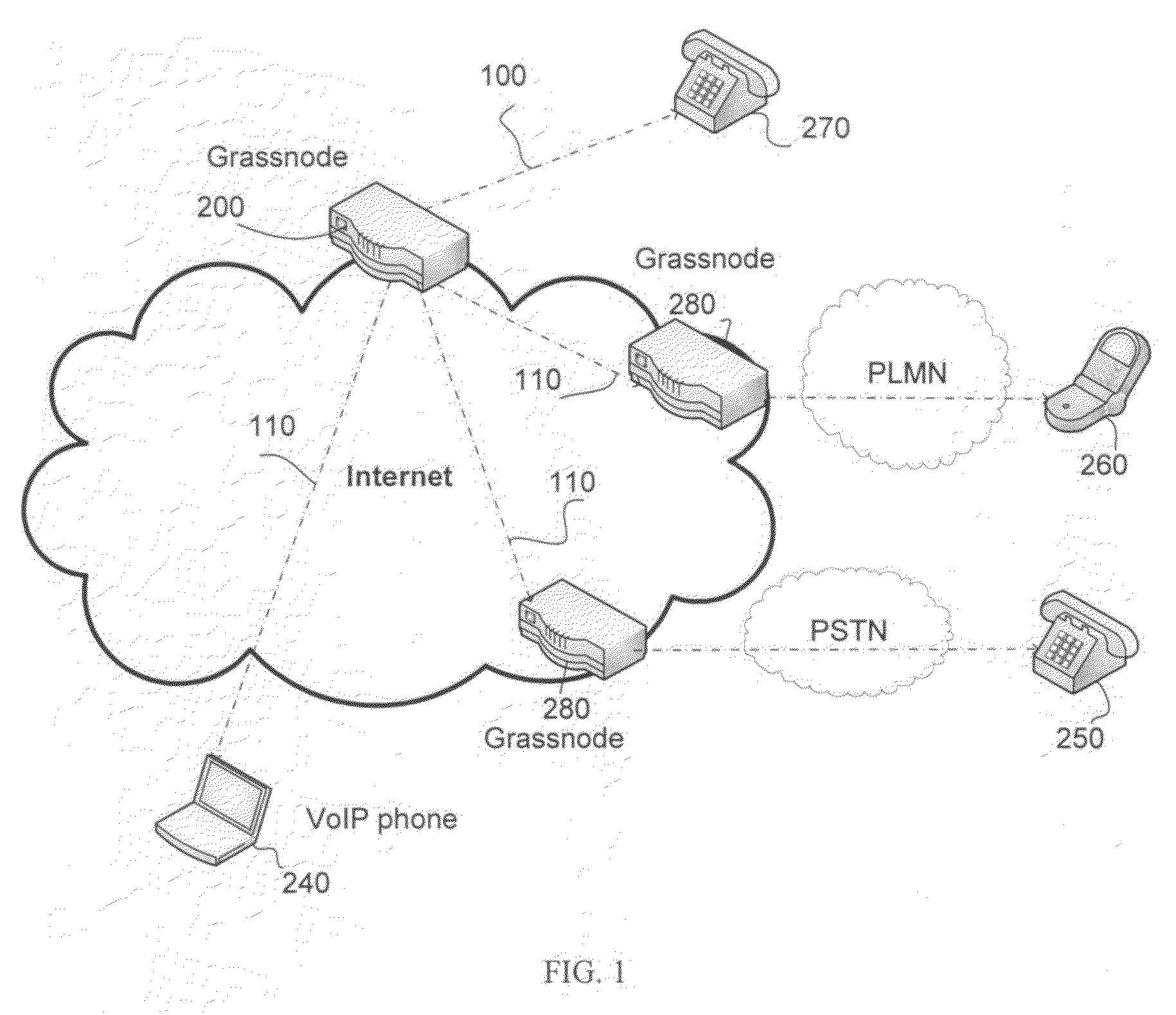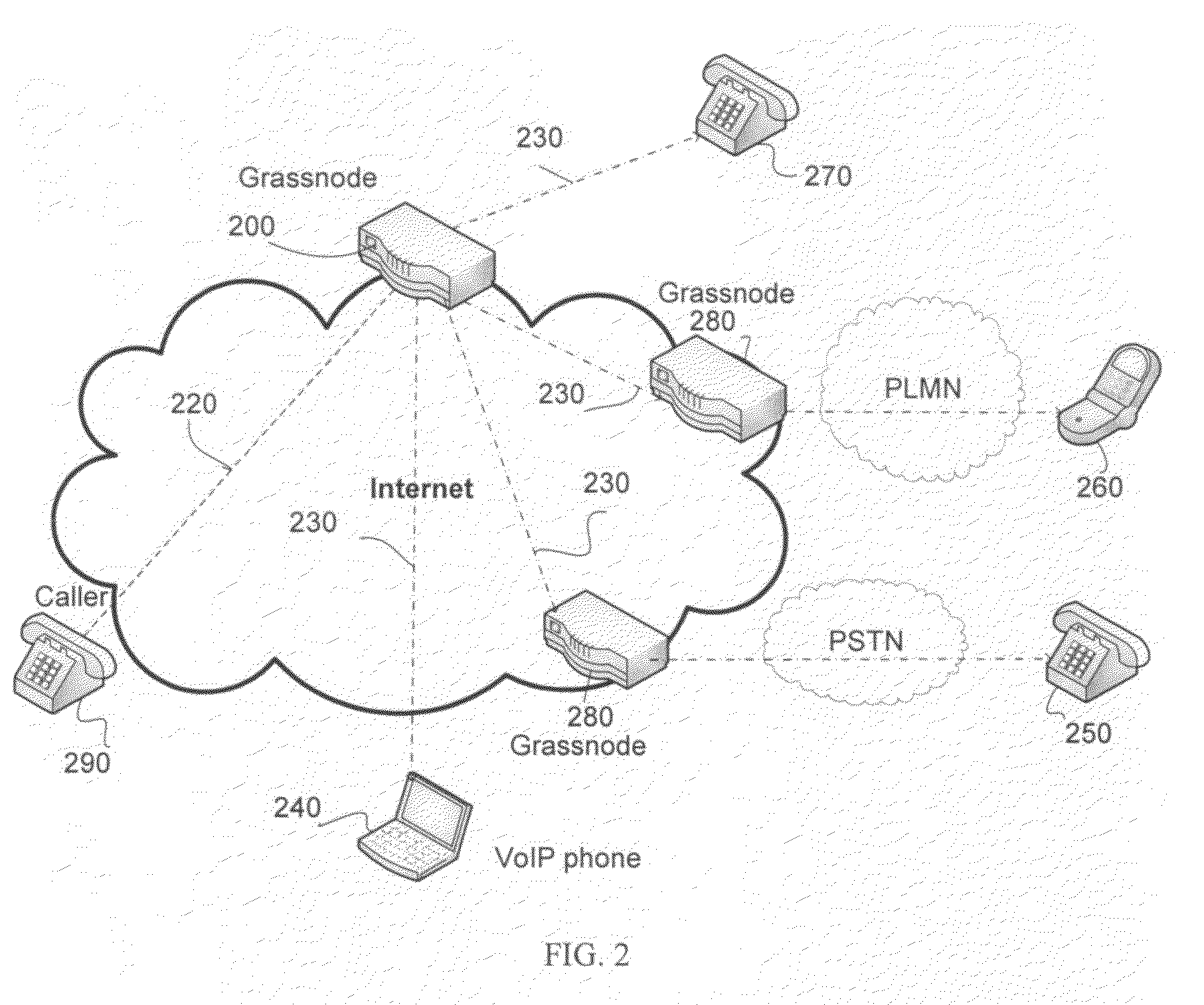Distributed identifier management
a technology of telecommunication identifiers and management tools, applied in the direction of data switching networks, digital transmission, interconnection arrangements, etc., can solve the problems of user's office desk phone becoming unavailable, unsecure channels such as public wi-fi links, and high cost dependence, so as to reduce the calling charge and facilitate the access to information. scalable and fast
- Summary
- Abstract
- Description
- Claims
- Application Information
AI Technical Summary
Benefits of technology
Problems solved by technology
Method used
Image
Examples
Embodiment Construction
[0046]A fundamental novelty of the present invention is the unique combination of two concepts: (1) a decentralized infrastructure without servers and (2) a novel telecommunication identifier management system to offer One-Number (1N) and One-ID (1D) services.
[0047]The decentralized architecture is based on an emerging distributed computing paradigm resulting from a breakthrough in DHT-based directory search algorithms (notably Chord, Tapestry and Pastry). As this is a major development, a working group within IETF (Internet Engineering Task Force) has been set up to draft a complete set of standards for P2P-SIP (peer-to-peer session initiation protocol). Since P2P-SIP is only one special case of generic distributed computing, to those skilled in the art, a serverless infrastructure can be designed using DHT-based search algorithms without utilizing the forthcoming P2P-SIP standards. A key characteristic of such decentralized infrastructure is that both control and data plane operat...
PUM
 Login to View More
Login to View More Abstract
Description
Claims
Application Information
 Login to View More
Login to View More - R&D
- Intellectual Property
- Life Sciences
- Materials
- Tech Scout
- Unparalleled Data Quality
- Higher Quality Content
- 60% Fewer Hallucinations
Browse by: Latest US Patents, China's latest patents, Technical Efficacy Thesaurus, Application Domain, Technology Topic, Popular Technical Reports.
© 2025 PatSnap. All rights reserved.Legal|Privacy policy|Modern Slavery Act Transparency Statement|Sitemap|About US| Contact US: help@patsnap.com



